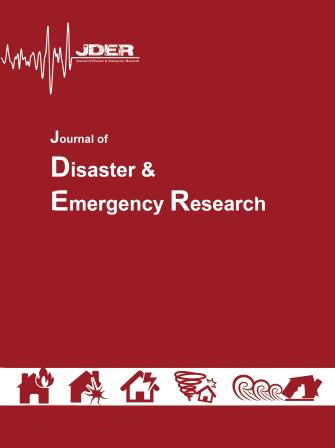Document Type : Letter to The Editor
Authors
1 School of Nursing (Broujen), Shahrekord University of Medical Sciences, Shahrekord, Iran
2 Department of Health in Disaster and Emergencies, School of Public Health, Shahid Sadoughi University of Medical Sciences and Health Services, Yazd, Iran.
3 Trauma Research Center, Shahid Sadoughi University of Medical Sciences and Health Services, Yazd, Iran.
Abstract
No Abstract
Keywords
|
A |
erosol-generating procedures (AGPs) such as endotracheal intubation put healthcare workers (HCWs) at the risk of exposure to the COVID-19. The World Health Organization (WHO) situation report no.82 indicates that as of 8 April 2020, 22073 confirmed cases of COVID-19 among HCWs have been reported (1). A study in China showed that 3.8% of cases of COVID-19 were among HCWs in which 14.8% were classified as severe or critical and five deaths (2). In this paper, we present a barrier enclosure which helps substantial spread reduction of the pathogen while performing AGPs.
Our fabricated barrier is a flexible transparent plastic that covers the head and extends to the chest and abdomen of the patient. The cover has two ports that are attached and sealed to a pair of long sleeve gloves. The glove enables the practitioner to perform respiratory interventions without unnecessary exposure to respiratory droplets and aerosols. At the same time, the dexterity of the practitioner would not be compromised.
To assess the effectiveness of the barrier enclosure cover, a simulation was performed. Our steps in the simulation were inspired by Canelli et al. experiment (3). A paramedic well-trained in endotracheal intubation attired in PPE was positioned at the head of an intubation simulation mannequin. The mannequin sniffing position was maintained during the experiment. To simulate a forceful cough and generation of droplets and aerosols during intubation, a balloon containing 10 ml fluorescent dye was inserted into the hypopharynx of the mannequin. The concentration of applied fluorescent dye was the same as saliva. Oxygen flow was used to burst the balloon. This led to the spread of fluorescent dye simulating a forceful cough. The experiment was repeated without and with the barrier enclosure cover. To trace the spreading dye on the scene, ultraviolet light (UV-A) was applied. (Figure 1)
Figure 1: barrier enclosure cover
Without the cover, the fluorescent dye was found not only on the practitioner’s PPE, but also on the mannequin clothes, on the bed, and the floor. When the mannequin was covered with the fabricated plastic cover and the test was repeated, the dye was found only under the cover and the contamination was dramatically limited. In contrast to Canelli et al. experiment in which the practitioner gloves and forearms were contaminated, we achieved substantial pathogen containment as a result of embedded long sleeve gloves. We hope that invented barrier will be helpful and serves as a base for future developments and optimization.

